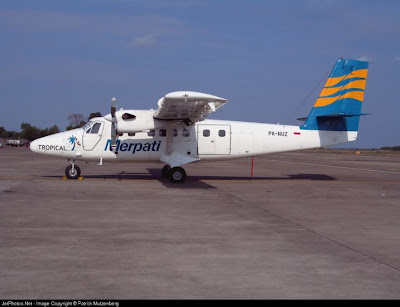 Panser 6x6 buatan Pindad (photo : chandra marsono)
Panser 6x6 buatan Pindad (photo : chandra marsono)
Pindad Dongkrak Penjualan Kendaraan Tempur Panser
BANDUNG, (PRLM).-PT Perindustrian Angkatan Darat (Pindad) menggarap serius pasar regional Asia Tenggara untuk mendongkrak penjualan kendaraan tempur panser. Dirut Pindad Adik Avianto Soedarsono mengemukakan dalam waktu dekat ini penjualan 32 unit panser ke negara jiran Malaysia tinggal menunggu kesepakatan akhir yang akan dilakukan pada pertengahan Mei 2010.
Selain Malaysia, Pindad dan Departemen Pertahanan menjajaki kerja sama perdagangan panser dengan Vietnam. Di saat yang bersamaan, pasar Filipina pun akan digarap. "Pada saat pameran di Malaysia baru-baru ini, Filipina menyatakan tertarik pula dengan produk panser kami," kata Adik, Jumat (30/4).
Saat ini, panser yang akan dijual ke Malaysia masih menjalani serangkaian ujicoba di lokasi pabrik Pindad, Kiaracondong Bandung. Beberapa komponen juga masih disempurnakan antara lain mesin, sistem pendingin, dan transmisi.Dia menuturkan khusus untuk penjualan Panser ke Malaysia, perangkat mesin tidak lagi menggunakan mesin pabrikan Renault. Akan tetapi, menggunakan mesin Mercedes-Benz. "Karena Renault ternyata menjadi pesaing kami untuk memasok kendaraan ke Malaysia sehingga kami harus mengganti komponen mesin," kata Adik.
Namun demikian, Pindad belum memastikan, apakah unit panser yang akan dijual ke Malaysia akan menggunakan mesin Benz. Adik mengemukakan ada dua pilihan mesin yang akan dipakai untuk panser tersebut yaitu Benz atau Deutz yang hampir sama dengan mesin Renault berkapasitas 7.000 cc dan berkekuatan 320 tenaga kuda.
Selain menjajal dan menyempurnakan produk, Pindad dan Malaysia juga masih membenahi berbagai persyaratan administrasi supaya transaksi penjualan yang dilakukan benar-benar menerapkan prinsip good and clean government. Jika semua uji coba dan persyaratan rampung dalam waktu dekat ini, maka kesepakatan penjualan 32 unit panser akan dilakukan Mei 2010.
Selanjutnya, pengiriman pertama panser ke Malaysia bisa dilakukan pada November 2010 dan sisanya pada akhir tahun. Adik mengatakan pihaknya juga akan mengusulkan penyelesaian sisa 61 unit panser dari total 154 unit, jika penjualan panser ke Malaysia benar-benar terwujud.
Dia menuturkan harga jual panser ke Malaysia akan lebih mahal 30% dibandingkan dengan harga panser yang dipesan Dephan seharga Rp7 miliar. "Memang ada beberapa hal yang membuat harga jual ke Malaysia lebih mahal," katanya.
Juga dijelaskannya, harga jual panser pada tahun ini akan dinaikkan 10 persen sampai 15 persen, sebagai penyesuaian dengan perkembangan ekonomi makro. Untuk itu, Adik meminta agar pemerintah mau mengucurkan dana tambahan untuk pembayaran unit sisa panser.
"Memang kontraknya dengan pemerintah berlangsung pada 2007, tetapi harga tahun 2007 mungkin berbeda dengan harga sekarang," katanya.
Lonjakan harga baja belakangan ini, juga berpengaruh pada harga jual produk Pindad secara keseluruhan. Akan tetapi, kata Adik, kenaikan harga produk tersebut tidak terlalu signifikan. (A-132/kur)***
(Pikiran Rakyat)

















































